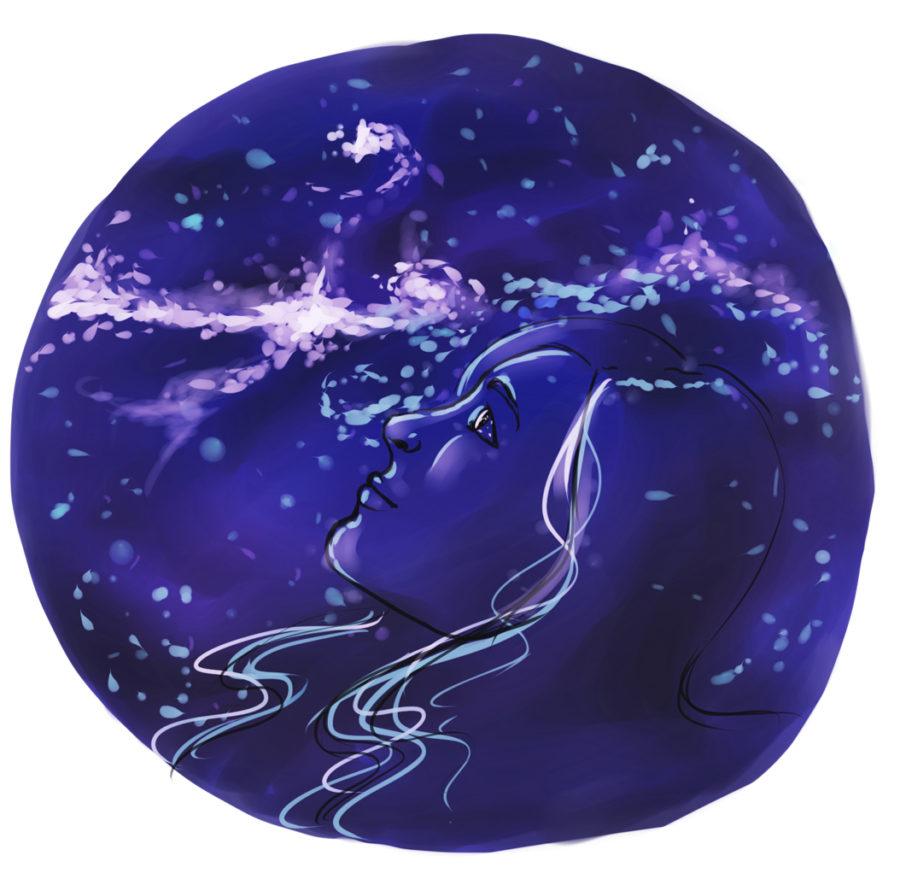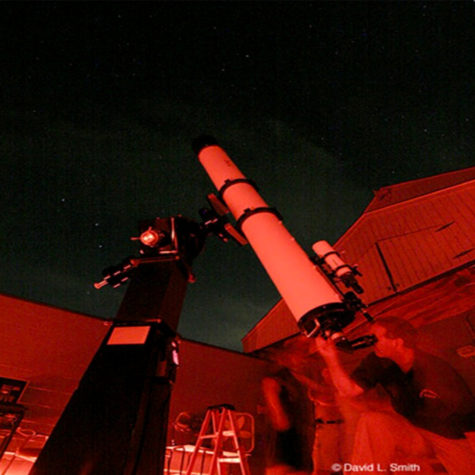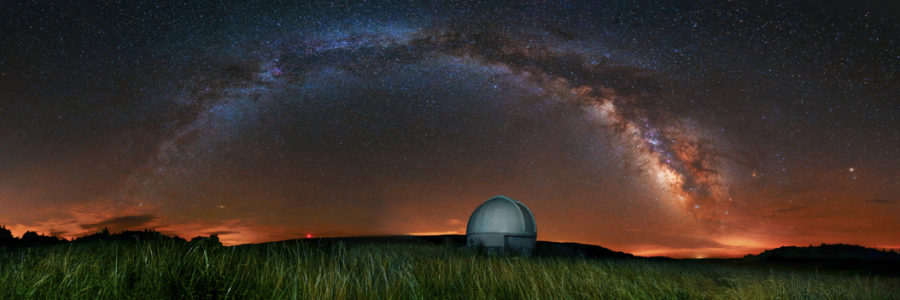Every new moon, a group gathers to stand outside in the cold, mosquito-ridden fields of Deer Lakes Park in Frazer and West Deer townships — a 32-minute drive from the Cathedral of Learning.
They’re not a secret society or dedicated “Cinema in the Park” enthusiasts. They’re there to look at the sky, but they aren’t scientists. They are Pittsburghers who want to feel small in a big universe — members of the Amateur Astronomers Association of Pittsburgh.
Bill Moutz, a 73-year-old former steelworker, has been interested in the stars since he was a child, when he often went stargazing on camping, fishing and boating trips. Eventually, he turned the hobby into a lifestyle when he joined the AAAP in 2003.
“People don’t always think they’re born of the universe,” Moutz said. “Some people think, ‘oh, I’m from Turtle Creek,’ or ‘oh, I’m from Murrysville.’ No, you’re born into the universe, and you should know a little bit about it.”
Leo Scanlon and Chester Roe, both working-class Pittsburgh natives, founded the AAAP in 1929 as a telescope-building organization. Over the past 88 years, the organization built both the Nicholas E. Wagman Observatory in Tarentum, Pennsylvania, and the Mingo Creek Park Observatory in Finleyville, Pennsylvania, as well as a base of 244 members.
Their purpose is clear: share the sky with anyone who wants it.
Prior to joining the AAAP, Moutz was interested in science but had little experience with it.
“My dad didn’t make a lot of money. I knew that if I was to go to college, I would have to pay my way through, and I didn’t really see that happening,” Moutz said. “I didn’t explore scientific fields. [But] I always did enjoy and share the night sky.”
After his wife, Maureen, bought him a two-inch diameter telescope that “couldn’t see crap,” Moutz and his wife went to an AAAP star party on the Carnegie Science Center lawn. Star parties — where a large group of amateur stargazers come together to share their telescopes and knowledge with other amateurs — are not exclusive to Pittsburgh.

In cities across the country, fans of the night sky gather for community and comets. Amateur stargazing groups and astronomical societies have been founded from Houston to Chicago to New York City, and one group in Los Angeles — The Los Angeles Astronomical Society — has more than 600 members. There’s even an umbrella organization called the Astronomical League, comprised of more than 240 amateur stargazing and astronomy groups, including the AAAP and 11 others across Pennsylvania.
At their first AAAP star party in August 2003, the Moutz couple saw astronomical events they’ll never forget — Martian polar ice caps and a green iridium flare from a satellite through a member’s telescope. As the bright green flare exploded across the sky, Moutz’s world expanded past the Steel City.
“It’s almost a spiritual experience. You’re in awe about the vastness of the universe,” Moutz said.
Over time, Moutz went from student to teacher. At the AAAP’s monthly business meeting on Feb. 10, he talked passionately to the other members about different types of telescopes and stargazing trips he’d taken. That day, a partial lunar eclipse — obscured by the cloudy weather — aligned with the AAAP meeting.
Fifty-one members greeted each other as old friends. The meeting was a sea of gray-haired heads. Members says star parties, which are open to the public, have a large age range, but the regular meetings tend to be middle-aged and above. Some think it’s because of the group’s formal meeting style or young people’s tendency to treat star parties as one-time events.
However, Amanda Myers, a 25-year-old economics and supply and demand graduate from Penn State Behrend, said people’s knowledge and deep involvement keeps the group alive despite its lack of young members.
“Everyone is very personable, knowledgeable and eager to share their knowledge — generous teachers,” Myers said.
After going to the 2015 Black Forest Star Party at Cherry Springs State Park in Central Pennsylvania, Myers bought Walmart binoculars and a star map — a basic map of the night sky — and started learning about the night sky by herself.
But the Pittsburgh hills, trees and power lines made stargazing difficult for Myers. Frustrated, Myers stopped by the flat field behind AAAP’s Wagman Observatory in September 2015. Soon, Myers began showing up to the AAAP meetings, where Pitt professor and longtime stargazer Diane Turnshek took Myers under her wing. Though relatively new to stargazing, Myers talks about the night sky like it’s her home.
“I’ve lived in cities my whole life, so I never got to see much of the night sky growing up. Because of light pollution, I didn’t know what I was missing,” Myers, an Atlanta native, said. “I want to share what I’ve seen with people.”
Myers and Turnshek worry that city light pollution will keep the night sky hidden from curious Pittsburghers, recalling an anecdote about Los Angeles’ 1994 Northridge earthquake. The earthquake caused a city-wide blackout, removing the light pollution from the night sky.
The Los Angeles Times wrote in 2011 that after the 4:31 a.m. quake, LA’s Griffith observatory received several calls with the same question: Does the sky really look like that? The LA natives were referring to the Milky Way, the centerpiece of a dark night sky. Though neither Myers nor Turnshek were in Los Angeles in 1994, the story serves as a warning of what Pittsburgh light pollution could cause.
According to the Journal of Science Advances, in 2017 light pollution obscures the Milky Way for about 80 percent of North Americans. Myers and Turnshek want to change cities’ reputation as inconvenient places for stargazers by providing stargazing locations within Pittsburgh and transportation to locations outside the city limits.
Myers and Turnshek have joined the International Dark-Sky Association, which uses education and research to advocate against light pollution. Turnshek advocated for anti-light pollution measures in a 2015 TEDxPittsburgh talk, a mission she continues currently by talking with Pittsburgh city officials about coordinating to scale down light pollution in the city.
Myers looks to more personal goals for the future. It’s her dream to combine her two passions of economics and astronomy and one day run supply logistics for NASA — which involves tracking all the machinery parts shipped to various NASA locations.
“No one I’m close with that’s my age is interested [in learning about astronomy] like me. Most young people I see involved [in amateur astronomy] are into astrophotography. Many will come and not know much about the sky — they just know a lot about photography. It’s a great exchange,” Myers said.

For other stargazers, astrophotography is a route to learning more about the night sky. Matthew Dieterich, a 25-year-old Pitt geology graduate, has even gained national recognition with his passion for astrophotography.
Dieterich didn’t spend his college weekends at frat parties or bars. Instead, he took trips from Pittsburgh to anywhere he could see the stars. At Spruce Nob, West Virginia, he sculpted what he feels is his art: taking pictures of the Milky Way.
“You need to be as far away from people as possible… Pittsburgh is a pretty awful place for nighttime photography,” Dieterich said.
Dieterich traveled to several national parks and had the guidance and support from other photographers from the AAAP. Now, he lives in Victoria, Texas, the state with some of the largest star parties in the country.
One of Dieterich’s photos, taken at Mount Rainier in Washington, won a U.S. Postal Service competition and is now featured on a Forever Stamp.
No matter where he’s been in the country, he always finds time to take a picture of the sky.
“It’s been there with me this entire journey. I keep coming back to it. It’s in me — the night sky,” Dieterich said. “Humans want to connect to that. When educating about the night sky, everyone is just jaw-dropped, curious. They [are] all little kids again. That’s the power of the night sky.”



